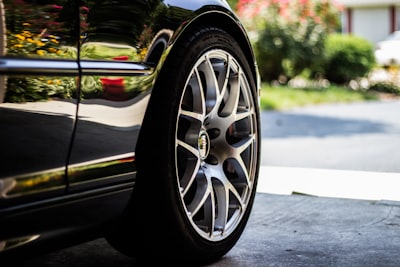If you look at your car’s tires, then you might notice the grooves and patterns that line the tire where it touches the road. This is a tire’s tread, and it is not just for show. Tread goes a long way towards protecting your vehicles stability, control surfaces and ease of operations. Therefore, it also keeps you safe behind the wheel. Consider what you need to look out for to maintain optimal tire treads. 
How Tread Works
Tire tread helps a vehicle grip the road. It does so by optimizing the degree of friction between tire and road. It provides more stability so that you can navigate through potential hazards like:
- Slippery or debris-littered roads
Were your tire completely smooth, then a variety of hazards might pose a risk to the vehicle. Primarily, smooth tires make your vehicle more prone to slipping and sliding. This could impact your ability to stop, avoid a hazard, turn a corner or make it up a hill.
Though durable, tread does begin to wear out over time. As tread deteriorates, your risks of accidents might go up. It is important, therefore, to always keep your tires in good shape.
Why Tread Deteriorates
Because of the friction created by tires on pavement, tread deteriorates over time. Though durable for several years, tires will begin to lose tread through a gradual shaving of the rubber. As a result, they will eventually begin to smooth out. And, the smoother the tire becomes, the higher your accident risks might be.
The Risk of Deteriorated Tread
No one wants to face a car wreck because of damaged or worn treads. What’s more, if the failed tread was the primary cause of the wreck, then the accident might be your fault. This could lead to a penalty on your car insurance. Others harmed by the accident might be able to file against your policy for their damage costs.
Therefore, you should keep an eye on your tread throughout your vehicle’s lifetime. Most tires have a lifespan of about 60,000 – 75,000 miles. However, depending on the brand of tires, where you drive and other factors, yours might deteriorate faster.
If you notice the tread on your tires has begun to look rough, or that the ridges in the tires have worn down to thin levels, then this means that your tread has begun to wear out. The grooving on your tires should fall between about 9/32”-12/32” at optimal levels. Below that measurement, it is time to start thinking about replacing your tires.
You can test your tread through what people commonly call the penny test, which you do by sticking a penny into your tread upside down. The more of Lincoln’s forehead you see, the closer your are to a tire replacement.